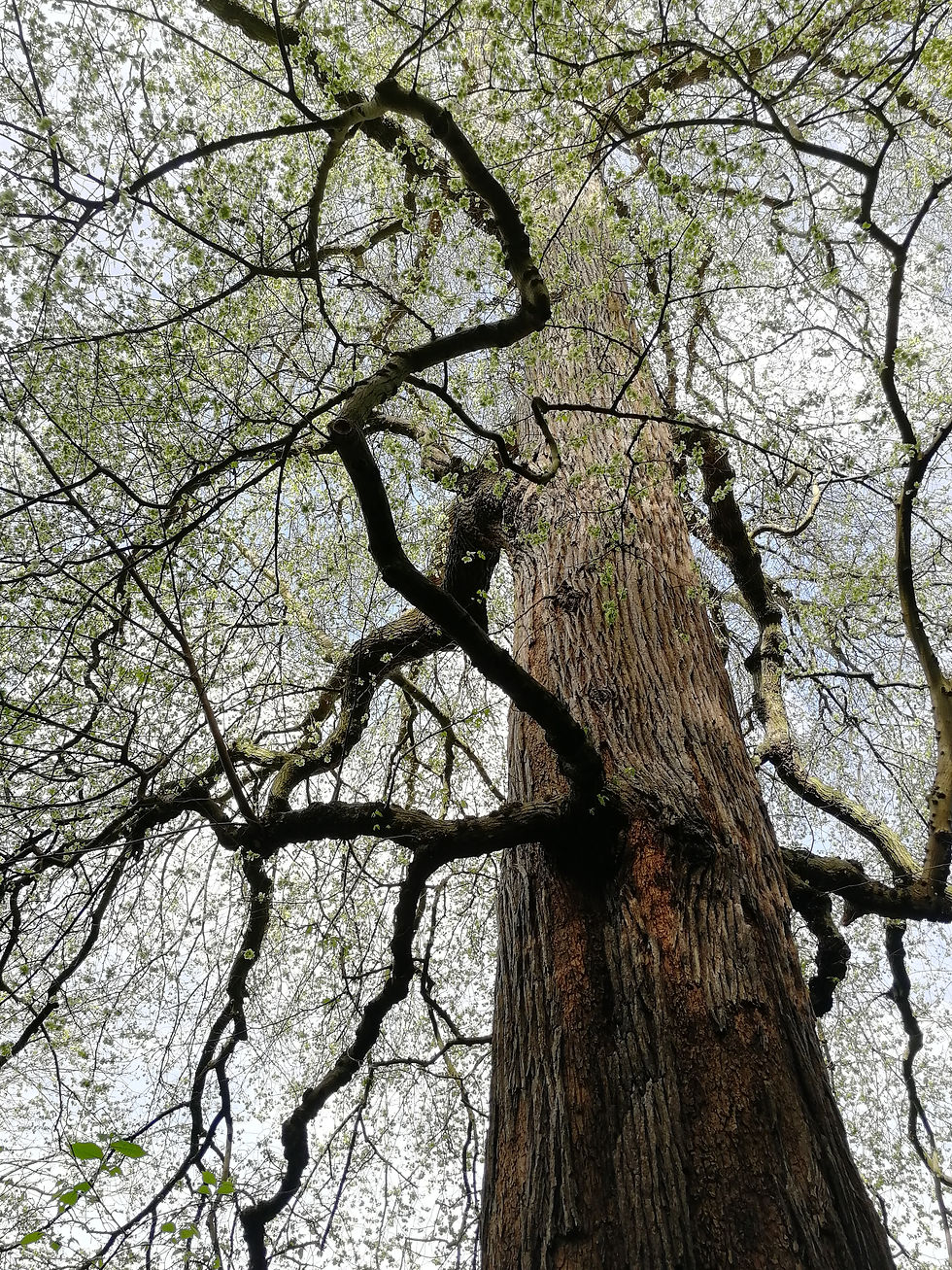The Green of Spring
- juliagoodwinla
- May 9, 2022
- 2 min read
At the moment, there is a very clear awareness of the importance of access to nature: audible, visual and, of course physical. We are lucky enough to live adjacent to the canal, which is bursting with bird song as the days become longer and warmer, and reminds me everytime how lucky I am to benefit from a proximity to bird-filled hedgerows. And a short walk, most of it along the canal, leads us to the woods.
It is not just a modern trend that emphasises the benefits of access to green infrastructure. This is something that people have known for as long as it was possible to live in a way that is disconnected from nature.

The woods near us were adjacent to Craiglockhart Hospital, now Napier University, which was used to treat war veterans suffering from shell-shock during World War I, including the poets Siegfried Sassoon and Wilfred Owen. The patients used the valley for exercise and recreation.
Wandering through the woods, as my children pretend to be dormice, you do not need to be suffering from intense trauma to feel the restorative power of the vivid new leaves, bright bird song and sense of connection walking beneath trees that have seen previous centuries pass by, spring after spring, bringing new life, colour and sound.

As a high school student growing up in South Africa, I was deeply moved by the war poets, and I still own a number of poetry anthologies from that time. And I never imagined that one day I would be walking the woods where Siegfried Sassoon and Wilfred Owen took some small respite from the horrors they had experienced, not far from where Anthem for Doomed Youth and Dulce et Decorum est were composed.
It is a particularly poignant time to be reflecting on the horrors of war, in a setting that feels so far removed from conflict and destruction.
So what had started out as a quick trip to see the swans, to take the children outside for some fresh air, became an unexpectedly meditative wander through Craiglockhart Woods and up Braid's Hill. No doubt, the power of nature as spring takes hold and the mind and body delights in the easing of winter would have been beneficial enough. However, what elevated my experience on the weekend were some simple interventions. In this case, a series of simple signs brought another layer of information and connection to my experience.

As designers of spaces and places, it is useful to be reminded of the power of such seemingly small interventions, rooted in place and history.
Siegfried Sassoon, who was fortunate enough to survive the first World War, wrote the poem Aftermath, which closes with the ringing lines:
"Have you forgotten yet?...
Look up, and swear by the green of the Spring that you'll never forget."
This weekend, thanks to a glorious spring day, beautiful ancient woodland and some simple signs, I was reminded once more.














Comments